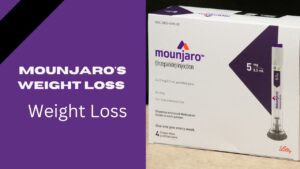Nexplanon is a contraceptive implant specifically designed for women seeking long-term birth control, known for its high effectiveness. The meticulous removal procedure, potential side effects, and essential aftercare steps is crucial for ensuring a smooth and well-managed experience with Nexplanon. Familiarizing yourself with these aspects ensures a comprehensive understanding of Nexplanon and contributes to a more informed and comfortable reproductive health journey for women.
Nexplanon’s Review
Nexplanon, an upgraded version of the discontinued Implanon, is a radio-opaque contraceptive implant about the size of a toothpick. Implanted under the skin of the upper arm, it releases progestin to prevent pregnancy for three years with a 99% effectiveness rate.
Read also Acxion’s Weight Loss Pills: Review, Uses, Advantage & Side Effects
Nexplanon’s Advantage
Nexplanon offers highly effective, long-term protection against pregnancy, boasting over 99% efficacy. Comparable to sterilization and intrauterine devices (IUDs), implants are among the most foolproof methods, as there is minimal room for user error. Unlike other methods, there’s no risk of forgetting to use it or using it incorrectly.
Read also Biotique Bio Cucumber Pore Tightening Toner Review
Nexplanon’s Side Effects
Nexplanon is generally well-tolerated, some users may experience side effects. Common ones include irregular bleeding and weight gain. Severe reactions such as consistent pain, allergies, liver issues, blood pressure changes, and respiratory problems require medical attention.
Nexplanon’s Removal Procedure
Preparing for Nexplanon removal is crucial. Healthcare providers must carefully follow instructions, confirm the implant’s location, and check for allergies to antiseptics. The removal process involves marking the implant, cleaning the area, local anesthesia, and a precise incision. Special forceps are used to gently extract the implant, ensuring no breakage.
Read also Secrets of Mochi Weight Loss: Reviews, Complaints, and Coupons
Nexaplanon’s Cost
The cost of Nexplanon can vary, ranging from $0 to $1,300. The removal of the implant may incur a cost between $0 and $300.
Nexplanon’s Post-Removal Instructions
After Nexplanon removal, women should use alternative birth control methods for the first seven days to avoid pregnancy. Post-removal care includes monitoring for numbness, soreness, and taking over-the-counter pain relievers. An elastic bandage is worn for 24 hours, followed by a regular bandage for 3-5 days. Bruising and swelling are normal, but signs like redness, consistent pain, or fever require immediate medical attention.
Nexplanon’s Possible Complications
Complications may include bruising, scarring, implant migration, or rare instances of the implant found in arteries. Surgical solutions may be necessary in such cases. Clinical trials reported implant site reactions in a small percentage of women, with erythema being the most common.
Nexplanon’s FAQs
Q1: How long does Nexplanon protect against pregnancy?
A1: Nexplanon provides three years of protection.
Q2: Does Nexplanon protect against STIs/STDs?
A2: No, additional protection like condoms is necessary.
Q3: Why replace Nexplanon after 3-4 years?
A3: It has an expiration date, and timely replacement or removal is crucial.
Conclusion
Gaining insight into the removal process, possible side effects, and post-removal care of Nexplanon is crucial for women contemplating or utilizing this extended contraceptive choice. If you encounter concerns or notice unusual symptoms related to fitness changes, it’s essential to promptly seek guidance from your healthcare provider.








